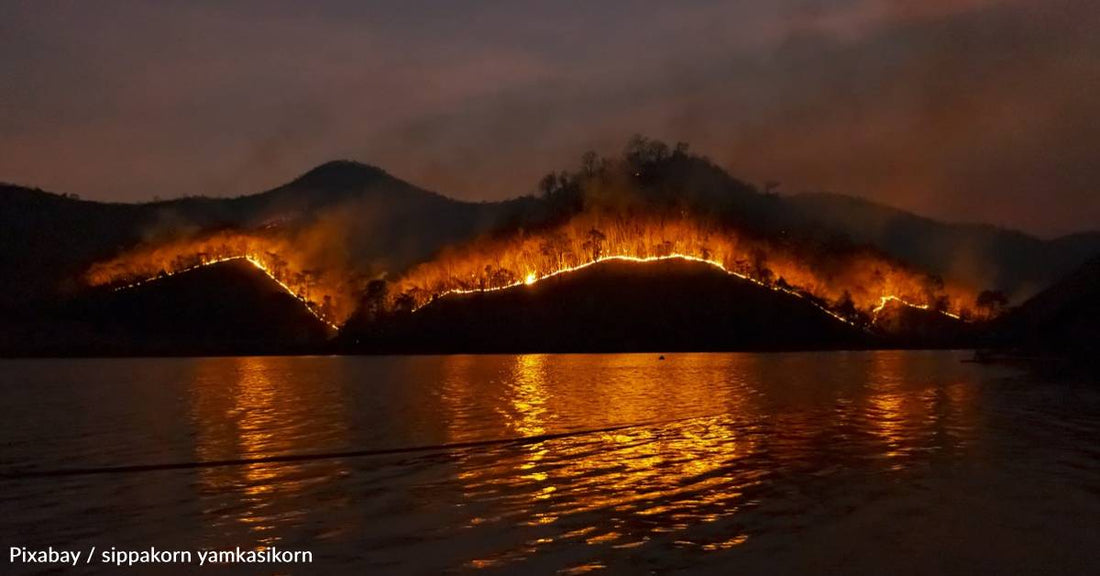How Wildfires Impact Wildlife
Michelle Milliken
When wildfires strike, evacuations can occur, beloved recreational areas can burn, and homes and other buildings can be destroyed. However, wildfires also wreak havoc on the homes of wildlife, often species already dealing with habitat loss and fragmentation. Animals can face immediate and long-term impacts, depending on how severe a fire is. Read on to learn more and how you can help.
When a Fire Hits
When a fire first sparks, animals have their own means of escaping. They may burrow underground, find other cover until the flames pass, run or fly away, or even find refuge in rivers or lakes, depending on the species. However, not every animal can escape. Older, very young, and slow-moving animals may die during the fire. Unfortunately, if a fire moves fast enough, even healthy animals that should be able to get away may not have time.

For animals caught up in fires, health impacts can include burns, smoke inhalation, oxygen deprivation, heat exhaustion, dehydration, and other injuries. Often, these prove fatal, and respiratory impacts can be especially damaging to birds, due to how their respiratory systems work. Predators may also take advantage of the situation and use the opportunity to hunt fleeing animals or those that were left behind.
These impacts can be wide-ranging, too. Research has indicated that almost 3 billion animals were killed or displaced by the Australian bushfires of 2019 and 2020. Meanwhile, in an especially harsh stretch in California from 2020 to 2021, more than 4.2 million acres burned. During that time, 100 different species experienced fire in at least 10% of their habitat. This includes animals like wolverines, great gray owls, and the long-toed salamander.
In a Fire’s Initial Aftermath
Though the initial burning can be devastating, most animal deaths actually occur after the fire has already ended. This is because of habitat, nesting site, and food loss.

The impacts depend on how significant the fire was. Low-intensity fires are important to a properly functioning ecosystem and actually provide benefits. These tend to burn underneath a tree canopy, clearing out thick or dead plants near the ground that can provide kindling for high-intensity fires, removing weak trees, allowing more resources for stronger trees, and opening up additional sunlight.
Low-intensity fires can also clear out enough vegetation to provide more types of habitat, which can improve biodiversity. There are even some plants that require fires to release their seeds, while native plants can thrive and all plants can benefit from soil enrichment that occurs after these smaller, healthier fires. However, there are still victims, as birds and other small animals that depend on the understory can lose their habitat.
High-intensity fires, meanwhile, are far more damaging. These can remove significant portions of the tree canopy, scorch soil and roots, lead to soil and ash runoff into water, and promote invasive plants that can outcompete their native counterparts. They can also take food from animals that eat the vegetation and seeds that were burned, which, in turn, impacts the predators that eat these animals. Species populations can become fragmented and isolated, as well.
After these more severe fires, the plant community undergoes significant changes. For some animals, the early regrowth is species appropriate, and they can thrive. However, with more sunlight hitting the ground, drying it out and heating it up, it can be damaging for animals like salamanders that require a cooler, moist environment. Those that rely on old growth forests are also heavily impacted. They may have to find another place to live.

Displacement after a fire can be shorter term, especially after low-intensity fires. Those who do well post-larger fires may also return soon. However, the displacement can last for years, depending on the species. While animals are displaced, searching for food or suitable habitat, they may be driven to developed areas, where human conflict is possible. They may also find themselves competing with other animals for limited resources. New predators, outdoor pets, and cars also pose a risk.
Longer-Term Fire Impacts
After a fire’s initial aftermath, there are lingering impacts to wildlife that can last for decades. According to the United States Fish and Wildlife Service, it can take more than 100 years for large trees to return after a high-intensity fire. This can lead to population impacts on species that depend on mature forests, especially if they’re already threatened for other reasons. In California, that includes the northern spotted owl, whose survival is currently at risk.

Other research has indicated that wildfire smoke exposure during early life can continue to impact animals in young adulthood, and that burned materials that make their way into aquatic habitats may impact the gut and skin microbiomes of amphibians that live there.
You Can Help
Wildfires in Southern California have already burned around 60 square miles this month. An estimated 15,000 structures have also been destroyed, while tens of thousands of people and pets are still under evacuation orders. Amid all the chaos, rescues are taking in orphaned and injured wildlife that have gotten caught up in the disaster. If you’d like to help support the animals’ care, click below!

